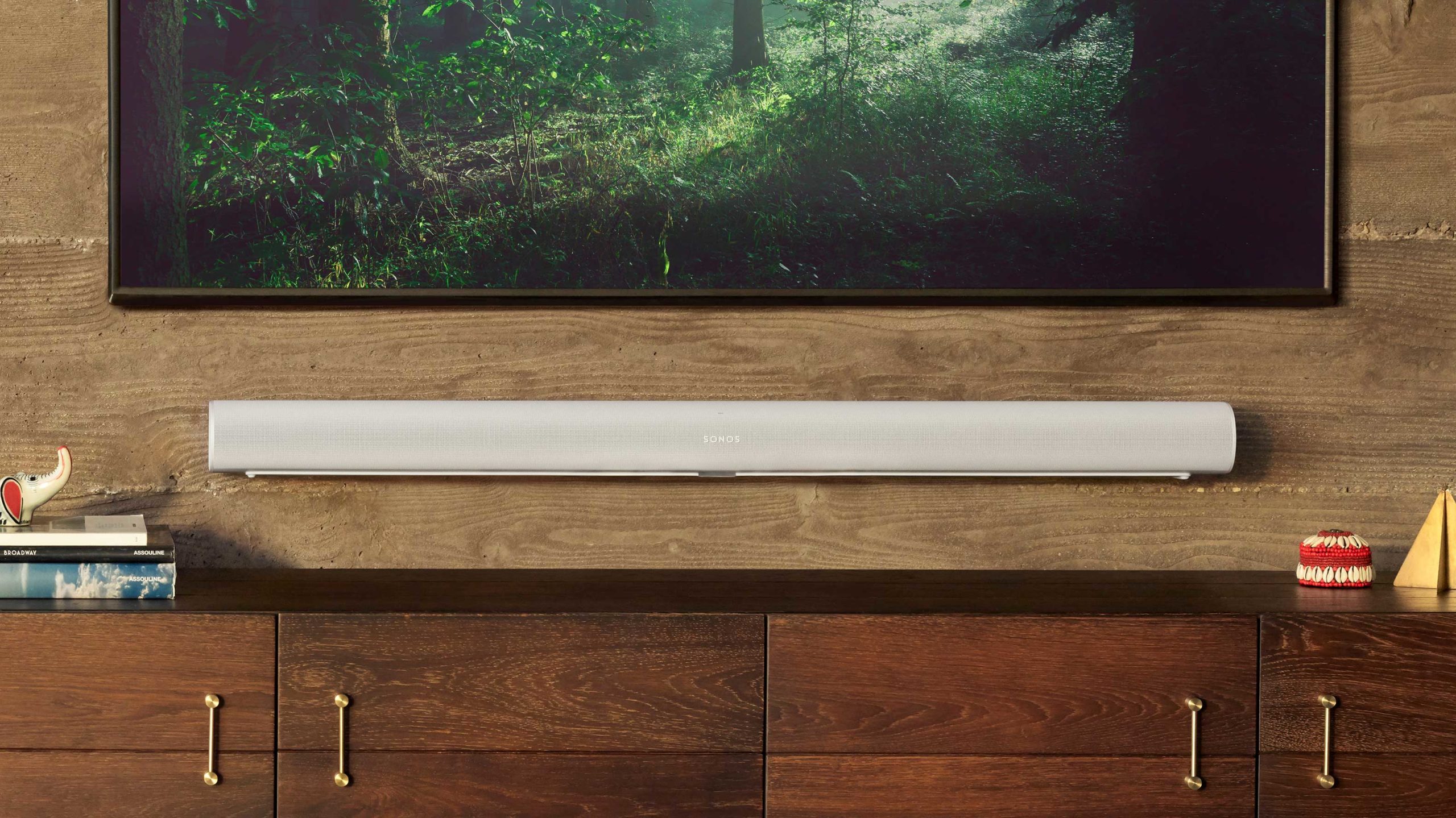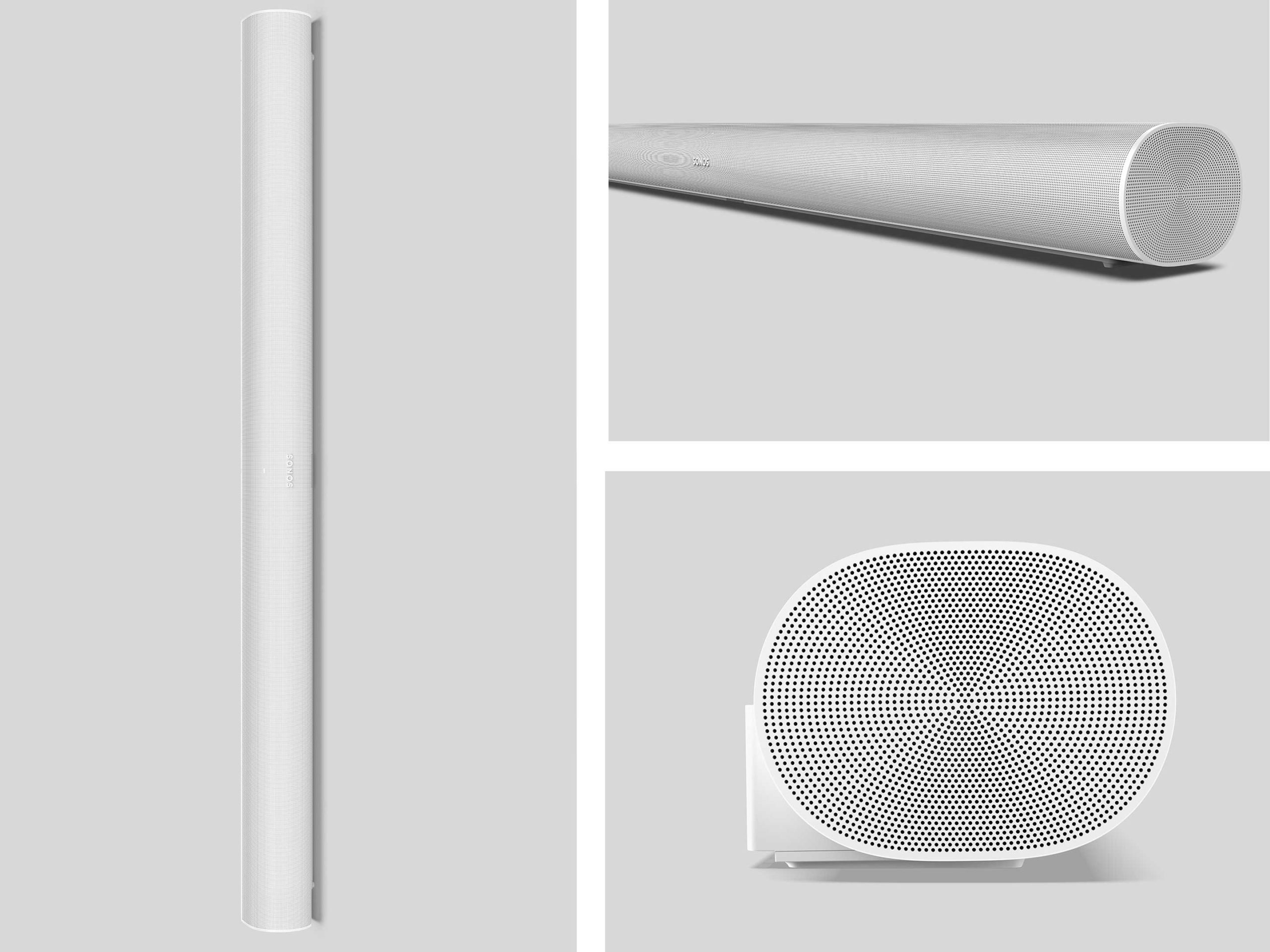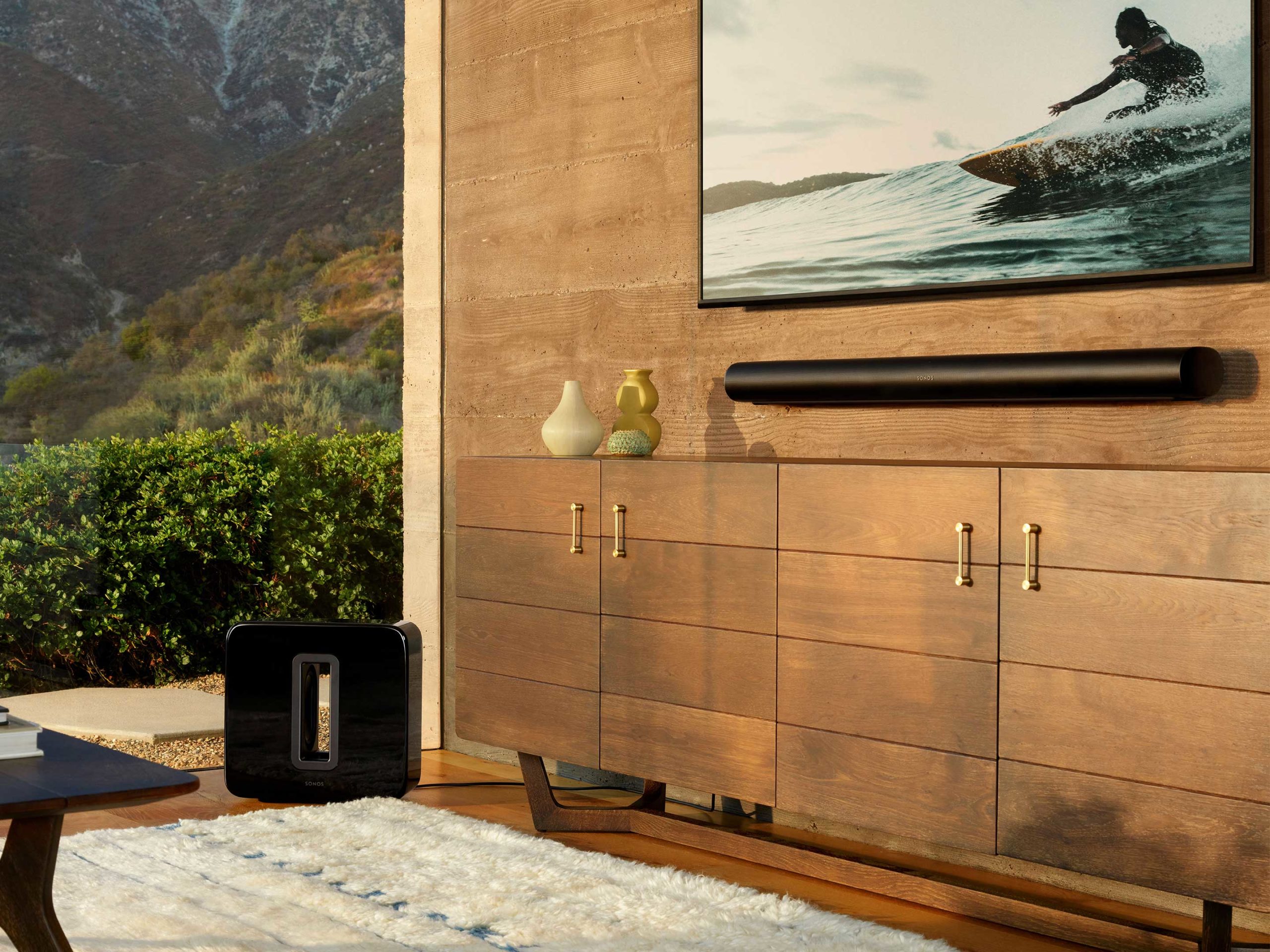
The Sonos Arc has arrived to bring Sonos’ soundbar game up to the next level.
This is the widest and most complex soundbar that the company has ever produced, and to some, it might even be the nicest looking. The speaker will be widely available for $999 CAD in Canada on June 10th. You can pre-order a unit today on Sonos.com.
All of that aside, the Arc represents the highest-level in Sonos’ soundbar lineup. It starts with Beam, which Sonos mentioned is one of its top sellers, then it goes up to the Playbar, the Playbase and now, the Arc. That said, the company is discontinuing the Playbase and the Playbar, so if you want one of those you’ll have to act fast.
Packed inside of the Arc are eleven class-D digital amplifiers, eight elliptical woofers and three angled silk-dome tweeters. There are also four far-field microphones, so you can use it as an Alexa or Google Assistant-enabled smart speaker.
Two of its drivers point upwards to provide Atmos supported 3D audio. Another two speakers point out of the left and right side of the soundbar to provide dedicated left and right stereo sounds. This means that even music playback through the Arc is in stereo. This also means that on its own, the soundbar has 5.0 sound capabilities for excellent sounding content while it maintains a separate speaker for dialogue.
The Sonos app also provides users with software toggles that increase vocal clarity and reduce loud noises for using it at night. Speaking on the Sonos app, the Arc and the new Sub and Sonos Five will all only work with the Sonos S2 app that’s coming out on June 8th. You can learn more about that in our companion article.
Coming back to the Arc, you can use Sonos’ TruePlay technology to tune the speaker to sound better in your room. Notably, this time TruePlay also takes the height of a room into account for more refined Atmos playback. Sadly, due to the wide range of microphone varieties in the Android ecosystem, you can only use TruePlay with an iOS device. If you don’t have an iPad or iPhone, Sonos says that the TruePlay data is stored in the cloud. Therefore, if a friend with an iPhone came over and you ran TruePlay tuning via their phone, the Arc would stay tuned after they left and uninstalled the app.
The Arc’s design features a curved piece of plastic with 76,000 tiny holes drilled into it. You can get it in either White or Black like Sonos’ other products. You can also purchase an extra wall-mount attachment that looks quite discreet. The Arc knows when it’s wall-mounted and will lower its bass output to balance out with the extra bass provided by being wall-mounted.
The Arc has and HDMI e-arc port on the back, but it comes with an optical audio adapter. However, e-arc and arc ports are likely better
Where Arc falls in the Sonos lineup
Overall the Arc is an impressive package, and it represents the highest starting point in the Sonos home theatre ecosystem. This is something I alluded to earlier, but I’ll go into more detail here for people unfamiliar with the platform.
Sonos’ main goal is to make multi-room audio really easy with a wireless implementation and a central app that works with other streaming services. The goal of its hardware team is similar because it’s trying to make great sounding speakers that are simple to use. If you’ve ever wandered into the world of high-end audio you know you can get lost in the technical terms very quickly.
Sonos does away with all of this by asking you to trust it to produce pleasing audio, and thus far, that’s worked out really well. You can buy a Sonos speaker and the more speakers you add to your collection, the better your sound gets. For example, starting with a single Sonos One is nice, but then when you stereo pair it with a second One, things sound a lot better. It’s a value-added system.
In home theatre, things work the same way. You can buy the soundbar and things sound better than your TV, and in the case of the Arc, a lot better than your TV. Then, if you want to upgrade it, you can get two more speakers to use as rear surround channels and the Sonos Sub to provide more bass.
Ideally, with the Atmos capabilities in the Arc, users might not need to add rear-surrounds or aa Sub, but to get the most out of it, that’s the best way.
Overall, the Arc is a super impressive speaker and stay tuned to MobileSyrup for a full review coming later in June.
MobileSyrup may earn a commission from purchases made via our links, which helps fund the journalism we provide free on our website. These links do not influence our editorial content. Support us here.




